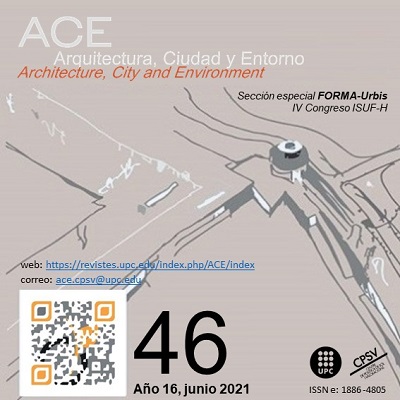Tramways in the Countries of Real Socialism in the 1960s and 1970s: From Crisis to Impetus
DOI:
https://doi.org/10.5821/ace.16.46.9260Keywords:
Rapid tramway, socialist city, collective public transport, interrelation transport and cityAbstract
After the Second World War, the reconstruction and development of the tramway system in the European countries of real socialism was, at the very least, hesitant, and quite different. Both in the West and in the East, the road became the universal means of transport and the Modern Movement triumphed in urbanism so that the tramway system was seen as an outdated and unsuitable means of transport. However, the industrial development and strong urban growth since the mid-1960s meant that in the countries of real socialism was necessary: the development of tramway infrastructure and new models of rolling stock, as well as the coordination of their operation in the urban-suburban transport system. The aim of this article on urban and transport history is to account for the period of tramway revival in the Europe of real socialism during the 1960s and 1970s, with its contradictions and problems, and to explain the implementation of the rapid tramway in its cities. To this end, the theoretical and practical approaches and the development of the tram itself are analysed in two different case studies: the Czech city Ostrava and the Russian city Yaroslavl. It is concluded that in the European communist countries there was a considerable diversity both in urban public transport policy and in the solutions of interrelation between transport and city. This research offers a barely studied topic that allows a better understanding of socialist urban planning, as well as its differences and similarities with the Western European experience.
Downloads
Published
Issue
Section
License
| INTELECTUAL PROTECTION CRITERIA |
At this moment, it is count with the "Oficina Española de Patentes y Marcas", while global protection it is being processed by the World Intelectual Property Organization (OMPI/WIPO). Nevertheless the International Standard Serial Number Office (ISSN) has given the following numbers ISSN: 1886-4805 (electronic version) and 1887-7052 (paper version). All articles will be peer reviewed, using double blind reviewing. |
| COPYRIGHT |
The article contents and their comments are authors exclusive liability, and do not reflect necessarily the journal editor commitee's opinion. All ACE published works are subject to the following licence CC BY-NC-ND 3.0 ES http://creativecommons.org/licenses/by-nc-nd/3.0/es/ It implies that authors do not hold nor retain the copyright without restrictions but only those included in the licence. |





































